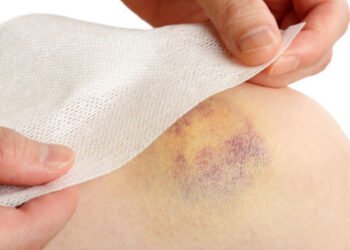Arthritis is a chronic condition characterized by damage and inflammation to the joints, including the knee joint. A board-certified orthopedic knee surgeon can recommend knee replacement after diagnosis. Knee replacement helps provide relief from arthritis symptoms, but it doesn’t cure the disease.
What Is Arthritis?
Arthritis refers to joint pain or joint disease which affects knee joints. The types of arthritis that affect the knee joints are osteoarthritis and rheumatoid arthritis. Osteoarthritis develops when the protective cartilage that cushions the ends of bones within a joint deteriorates over time. The condition is caused by wear and tear when bones rub against each other. Osteoarthritis symptoms include stiffness, reduced mobility, and pain.
Rheumatoid arthritis is an autoimmune ailment that affects different joints, including the knees. When rheumatoid arthritis affects the knee joint, it can cause symptoms such as pain, swelling, stiffness, and difficulty moving the joint. If left untreated, rheumatoid arthritis can lead to joint deformities and irreversible damage.
Post-traumatic arthritis occurs after a significant injury or trauma to the joint. Post-traumatic arthritis can result from various knee injuries, such as fractures, dislocations, ligament tears, or meniscus tears. The condition entails the loss of articular cartilage, which covers the ends of bones within the joint.
What Is Knee Replacement?
Knee replacement surgery involves removing the diseased parts of the knee and replacing them with prostheses made of metal and plastic. Knee surgery can strengthen your knee and reduce discomfort linked to arthritis. An orthopedic knee surgeon can suggest surgery for patients with rheumatoid arthritis, osteoarthritis, and post-traumatic arthritis. Knee replacement can be a good option when physical therapy, lifestyle modification, and medication have not provided sufficient relief. Knee replacement falls into two categories:
- Partial knee replacement: Also known as unicompartmental knee replacement, this surgical procedure helps treat severe arthritis that affects only one compartment of the knee joint. Partial knee replacement includes a smaller incision, shorter hospital stay, quicker recovery, and preservation of more of the patient’s natural knee joint.
- Total knee replacement: In total knee replacement surgery, the medial, lateral, and patellofemoral compartments of the knee joint get replaced. Also known as total knee arthroplasty, this procedure replaces the entire joint with prostheses.
What Happens During Knee Replacement Surgery?
Before surgery begins, the doctor will administer anesthesia to manage discomfort during the procedure. Once the anesthesia takes effect, a knee surgeon makes an incision over the knee to get to the joint. The surgeon moves aside the surrounding tissues to expose the knee joint, allowing clear visualization of the damaged joint surfaces.
The next step involves removing the damaged portions of the femur, tibia, and affected cartilage. The surgeon uses specialized surgical instruments to resect the bone to prepare it for the placement of the prosthetic components. After that, the surgeon implants the artificial prosthetic components. The features include a metal alloy for the femoral component and a metal tray for the tibial component. A plastic spacer goes in between the components to provide a smooth surface.
The knee surgeon can resurface the knee cap using a plastic component to improve its function and reduce friction. After that, the surgeon tests the movement and stability of the knee joint. The next step is to close the incision with staples or stitches. A surgeon then covers the surgical site with a sterile dressing and places your leg in a brace or compression stocking to promote healing and control swelling.
What Are the Benefits of Knee Replacement?
Following surgery and a comprehensive rehabilitation program, patients may experience improved joint function and increased range of motion. They may also be able to perform activities they could not do before, such as walking, climbing stairs, and participating in low-impact sports. The prosthetic components used in knee replacement surgery are designed to be long-lasting, meaning patients can enjoy the results for an extended period. Knee replacement surgery helps alleviate pain related to arthritis and can be a great option when physical therapy and medications have proven to be unsuccessful.
Find a Board-certified Orthopedic Knee Surgeon
A board-certified orthopedic knee surgeon diagnoses arthritis symptoms and can suggest surgery to treat the disease. After surgery, the surgeon initiates a rehabilitation training schedule to help you regain strength and function in your knee. Book an appointment with a qualified surgeon for knee replacement surgery today.












